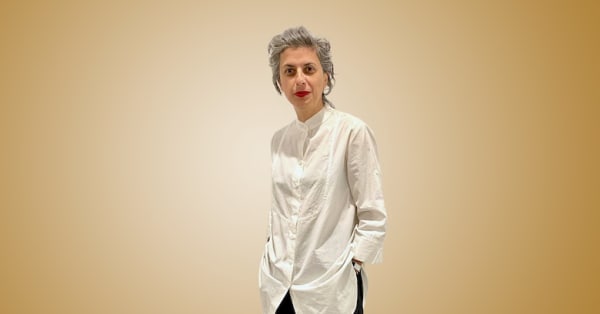Ask Virginia When Is It Restriction, and When Is It Good Parenting?
Kids need boundaries, but diet culture teaches parents to set the wrong ones.
A Quick Housekeeping Note: We’re taking our first real (yet very Covid-cautious!) vacation since Before Times next week, so I’ll be taking a little newsletter vacation, too. Paid content will resume Thursday, September 9, and the free essays will be back starting Tuesday, September 14. There will be a similar break around the end of the year and at various other points related to my kids’ school calendar. If I ever need to exceed six weeks off in a calendar year, paid subscriptions will be paused. Thanks for supporting a job with real work/life balance!
But BEFORE THAT: On this Thursday’s audio newsletter, I’ll be speaking with Nyemade Boiwu and Janet Conroy-Quirk, the creators of the National Plus Guide, a directory and community by and for fat folks and their allies. The goal of the directory is to make it easy to identify and locate safe, comfortable spaces for larger bodies. If you haven’t already, consider subscribing so you don’t miss our great conversation about inclusivity and allyship! (More about all the benefits of a paid Burnt Toast subscription here.)
Now, onto this week’s question(s):
1. I’m trying not to put limits on food for my kids but I’m really struggling with the question of sugar-filled foods, which my son craves and tends to OD on if he has the chance. He has ADHD so he’s more inclined to seek out sugar/carbs because of the dopamine surge they provide. What do we do when the notion of “no food is off limits” clashes with what’s indicated for other conditions our kids might have?
2. Related to the idea of no limits, my 3.5 year old daughter loves to ask for food after she’s gone to bed, brushed teeth, etc. The issue I have is not with giving her more to eat, but that I want her to internalize that after you’ve brushed teeth, no more food (cuz it’s not good for your teeth). What are your thoughts on putting that kind of limit on kids?
I’m answering these questions together because they illustrate a very common tension in the conversation around kids, food and limits. On the one hand, we worry that our kids crave certain foods (sugar) too much, and will eat it to the point of making themselves sick if we don’t put in some limits. On the other hand, in our effort to give our kids full permission to eat, we can end up compromising our general parenting structure in ways that feel iffy.
So let’s start by reviewing what we know about sugar in general: The research shows that sugar highs are a myth, as I reported for the New York Times last March. What parents perceive as kids getting crazy when they eat sugar is more likely the craziness induced by birthday parties or holidays in general. It’s also often one way they respond to our complicated (and even unspoken) feelings about sugar. Restriction and disapproval breeds fixation.

Sugar is not physically addictive. I touched on this in my recent piece on processed foods, but the concept that feels most important for parents to grasp is “habituation.” Food—including sugar, but quite unlike physically-addicting drugs or alcohol—is a substance we both need and habituate to, meaning the more access we have to it, the less we crave it. In fact, when researchers try to hook rats on sugar, they can only achieve this “addiction” by first starving the rats. In other words, what looks like addiction might be a pretty reasonable response to dieting.
Human studies on sugar or other forms of food addiction also fail to control for how much dieting is a factor in the eating experience. And yet: “We know the vast majority of people who struggle with food addiction are recurrent dieters,” says Sumner Brooks, RDN, co-author of the forthcoming How To Raise an Intuitive Eater (yes, go right ahead and pre-order that now). And it’s the deprivation caused by dieting (or other forms of restriction) that triggers our sugar cravings. “People who have been restricted, dieted or food insecure in the past may experience a constant looming emotional threat of deprivation, which makes their drive to eat sugar even more intense,” Sumner explains. This threat of deprivation may linger even long after someone has begun eating enough; it’s often a big part of what drives binge eating. “This can certainly look and feel like addiction,” Sumner notes. “But it’s not the same as how addiction works with alcohol or drugs.”
Habituation is often really hard for folks to believe in, because most of us have lived with restrictive ideas around sugar for so long, we don’t even identify them as such. We use language like “he tends to OD on it” without thinking about how equating sugar with a potentially fatal substance like heroin sets up a restrictive mindset. (I’m calling this out with love. I’ve made those comments, too!) It’s almost impossible to separate our restrictive cultural beliefs about sugar from our experience of consuming sugar. And yet when researchers study the perceived dangers of sugar, this bias (just like anti-fat bias) is rarely named or measured. For a deeper dive into how our cultural biases around food and weight inform research on sugar and health, check out Christy Harrison’s recent newsletters. (That link is for paying subscribers only but her work is well worth supporting! Paid subscribers of Burnt Toast can also hear my recent conversation with Christy here.)
Folks with ADHD are, of course, getting all the same messages around sugar and restriction as the rest of us. So again, it’s hard to tease out in the research when their sugar cravings are the result of diet culture and when they are a product of neurodiversity. But there is some evidence that people with ADHD eat more sugar than neurotypical folks, and as you mentioned, that may stem from their heightened dopamine cravings. That doesn’t mean your child with ADHD needs extra sugar limits, though. Instead you can focus on making sure he has plenty of options for getting the dopamine he craves (listening to music, playing video games, getting a hug, watching a funny show, etc) in addition to food. “If you’re helping your child find a variety of ways to get their dopamine bursts, then the occasional sugar dopamine burst is a-okay,” says Sumner. “Sometimes using sugar or other food this way is just the easiest option for parents.”

But let’s be clear: No child, neurodiverse or not, benefits from a total lack of limits around food. Letting kids eat whatever they want, whenever they want is fine for vacation or birthdays, but would be pretty disconcerting to most kids as a daily routine because they just aren’t developmentally ready to be in full control of feeding themselves. A total free-for-all gives them more responsibility than they can or should have to handle. So yes, you can and should have a house rule that we stop eating for the day after teeth get brushed. And you may want to institute a regular pre-teeth-brushing bedtime snack, so you can be sure she’s not going to bed hungry. This will make it easier to say no when she makes the post-bedtime ask: “We’re all done eating for the day, but we’ll have a yummy breakfast tomorrow!” (If she throws a fit, know that it isn’t about the food. I promise that my 3.5 year old is throwing the same fit at my house post-bedtime, only she’s demanding different socks. They are just doing what 3.5 year olds do when it dawns on them that life continues in the world after they go to bed.)
Telling kids that we’re not eating right now, but we will eat again soon isn’t putting food off limits—it’s putting food into a framework that makes sense for them. The problem is that parents are often confused about how stringent the framework needs to be, and try to control both how often kids eat and what or how much they eat when it is time to have food. You don’t need to be in charge of all of the things. You set boundaries around when eating happens in order to support kids in figuring out how much they want to eat when it’s time to have food. You make decisions around what food to put on the table in order to make sure kids can then decide how much (and which foods on offer) will be “enough.” So, when you serve sugar (and if you have kids who tend to sugar-fixate, you should serve it often!), you can just serve it and not worry about how much they eat—even if it looks like a lot. But when you’re not serving sugar, or it’s not time to eat, you don’t have to drop everything to cater to a kid’s food demand. Instead, acknowledge the validity of their request (“Oh yeah, I also love Oreos!”) and let them know when they’ll be eating it again (“should I put some in your lunchbox today?”).
And—and I can’t underscore this part enough—do all of this the same way, with all of your kids, whether they have different neurological make-ups, different health concerns, different appetites, or different body sizes. Nobody benefits from thinking of foods as off limits. And every kid deserves to feel empowered to listen to and trust their body.
ALSO
Listen: This week I was one one of the guests on “Unforked” talking about parenting “healthy” eaters. Listen here.





